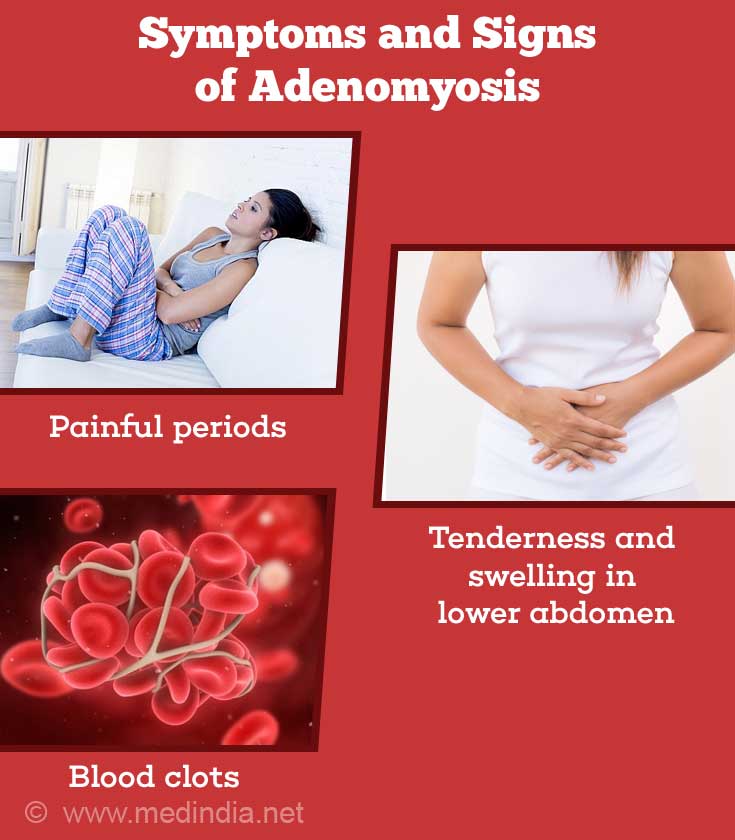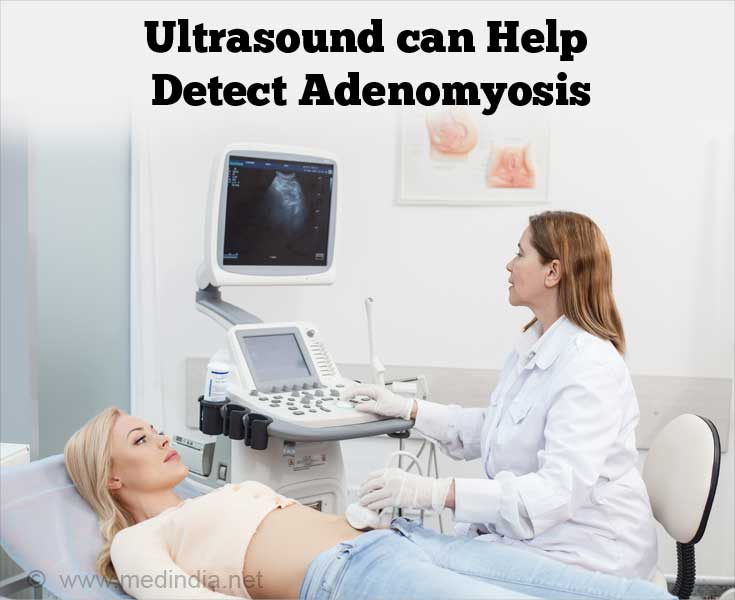- Is Adenomyosis the neglected phenotype of an endomyometrial dysfunction syndrome? - (https://www.ncbi.nlm.nih.gov/pmc/articles/PMC3338914/)
- Health Direct - Adenomyosis - (https://www.healthdirect.gov.au/Adenomyosis)
- Women with Adenomyosis are at higher risks of endometrial and thyroid cancers: A population-based historical cohort study - (http://journals.plos.org/plosone/article?id=10.1371/journal.pone.0194011)
- Effects of Adenomyosis on in vitro fertilization treatment outcomes: a meta-analysis - (https://www.fertstert.org/article/S0015-02821730484-3/pdf)
What is Adenomyosis or Bulky Uterus?
Adenomyosis or Bulky Uterus is a benign (not life-threatening) condition of the uterus in which the cells that normally line the inside of the uterus (endometrium), grow into the muscle layer (myometrium) of the uterus.
Adenomyosis is only found in women who are in their reproductive years. This is because the hormone estrogen is required to develop this condition and it eventually goes away after menopause when the level of estrogen in the body drops.
Even after invading the myometrium tissue, the endometrial cells continue to function as they would, during each menstrual cycle. The endometrial cells thicken, break down and result in menstrual bleeding. This results in thickening of the uterine walls and diffuse enlargement of uterus and heavy periods. Though Adenomyosis is not life-threatening, frequent pain and heavy periods can affect a woman’s quality of life.
The symptoms are noticed either during pregnancy or after having children. The prevalence is estimated to be 20% to 30% in the general female population.
About 30% to 50% of women with Adenomyosis have no symptoms.
What are the Causes of Adenomyosis?
The causes of Adenomyosis are not yet understood, but the disease typically disappears after menopause.
- Surgery: Incisions made in the uterus during surgery such as Cesarean Section or removal of fibroids may promote the direct invasion of the endometrial cells into the wall of the uterus.
- Uterine inflammation:An inflammation of the uterine lining during childbirth or surgical procedures on the uterus might cause a breakage in the usual boundaries of cells that line the uterus and result in cells from inner layer to be embedded into the muscle layer of the uterus.
- Developmental:It is speculated that the endometrial tissue is deposited within the uterine muscle in the developmental stages when the uterus is formed in the fetus and this endometrial tissue proliferates in the adult years resulting in Adenomyosis.
- Stem cell invasion: It is speculated that bone marrow cells stem may invade the uterine muscle wall and cause Adenomyosis.
What are the Symptoms and Signs of Adenomyosis?
- Heavy or prolonged menstrual bleeding.
- Painful periods. There is severe cramping or sharp, stabbing pelvic pain before and during menstruation (dysmenorrhoea). The pain may last throughout your period and worsen as you get older.
- Pain during sex.
- Bleeding in between periods.
- Tenderness and swelling in lower abdomen.
- Blood clots during menstrual bleeding.

How do you Diagnose Adenomyosis?
- A pelvic examination: This physical test is performed to determine if your uterus is swollen or tender. Most women with Adenomyosis have a uterus that is two or three times the normal size.
- Magnetic resonance imaging (MRI) of the uterus: This test is done if the doctor is unable to confirm a diagnosis using an Ultrasound. The MRI scan is done to obtain high resolution images of the uterus. An MRI uses a magnet and radio waves to produce detailed images of your internal organs.
- Ultrasound: This test uses sound waves to produce moving images of your uterus. This test is helpful in diagnosing the condition and also ruling out the possibility of tumors within and on the uterus.

How do you Treat Adenomyosis?
Adenomyosis usually goes away after menopause, so the treatment may depend on how close you are to your menopausal period. The treatment options for Adenomyosis include:
- Anti-inflammatory Drugs: Your doctor may prescribe anti-inflammatory medications, such as Ibuprofen and Naproxen to control the pain. These medicines are taken two to three days before your menses begin and continued throughout your period. These medicines help to relieve the severe spasmodic pain and also reduce the menstrual flow. However, you should not use these medications if you are pregnant.
- Hormone Medications: Birth Control pills (oral contraceptives) which contain combined oestrogen and progesterone hormones, or progesterone only contraceptives may be used to help control increased oestrogen levels that may be causing heavy bleeding and severe pain associated with Adenomyosis. Hormone patches or intra uterine devices may also be used.
- Hysterectomy: Removal of uterus is advised if your pain is very severe and your menopausal period is many years away. During the surgery the ovaries are usually not removed. It is only used in severe cases and in women who do not plan to have any more children.
- Endometrial Ablation: In this procedure the endometrium or lining of the uterine cavity is removed or destroyed. This technique will not work if the endometrial cells have invaded the muscle layer of uterus very deeply. This is performed as an outpatient procedure and has a quick recovery time.
- Uterine Artery Embolization: Uterine Artery Embolization involves cutting off the blood supply to the affected area. With the blood supply cut off, the Adenomyosis shrinks in size.
How do you Prevent Adenomyosis?
Since the causes of Adenomyosis are not yet known, there are no known preventive measures.
What is the Prognosis of Adenomyosis?
Adenomyosis is not a life-threatening illness. There are many treatments available to help alleviate your symptoms. Moreover, Adenomyosis does not affect your fertility levels much and goes away on its own after you reach your menopause.









